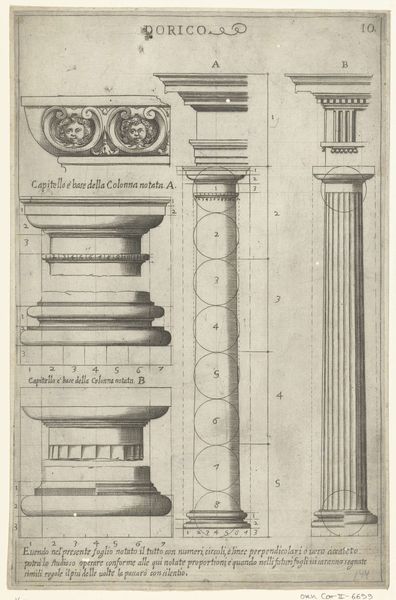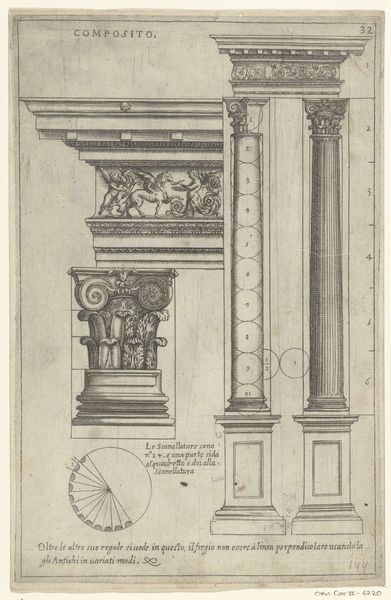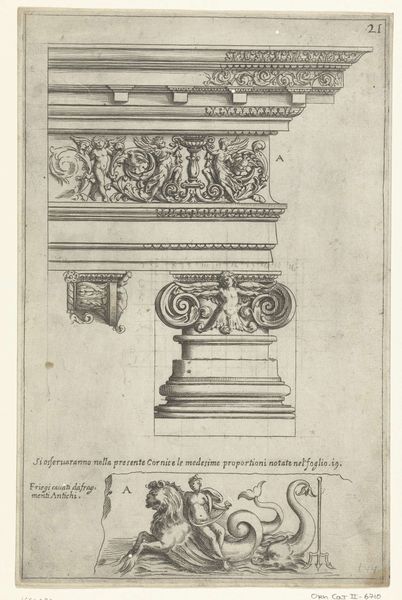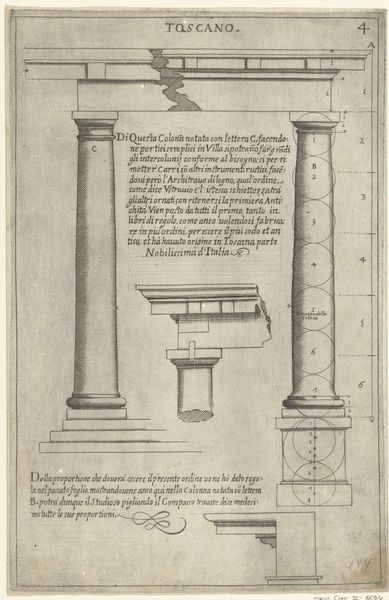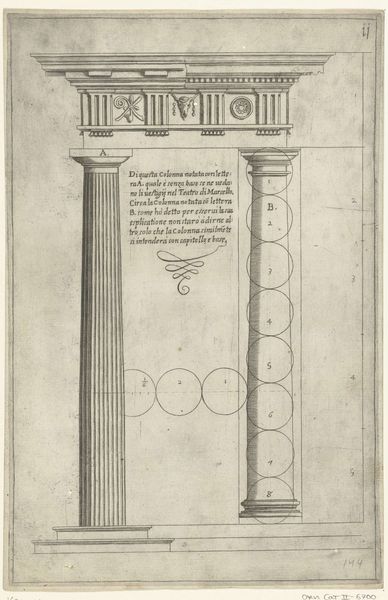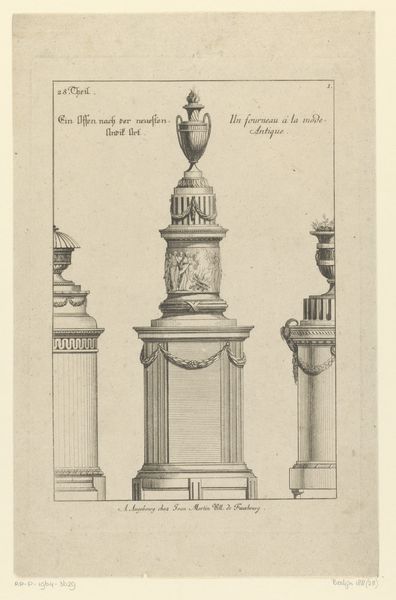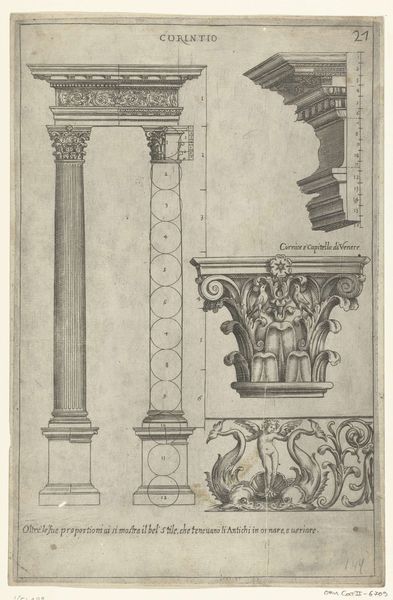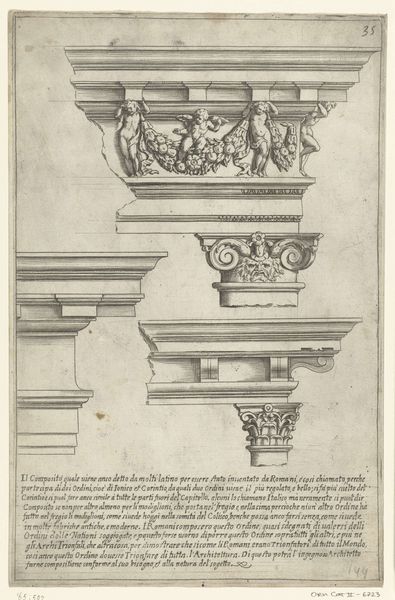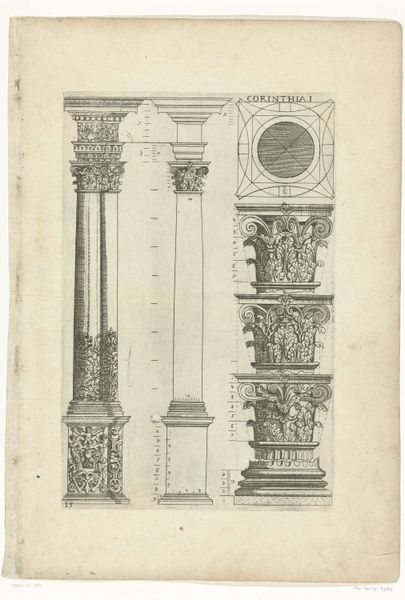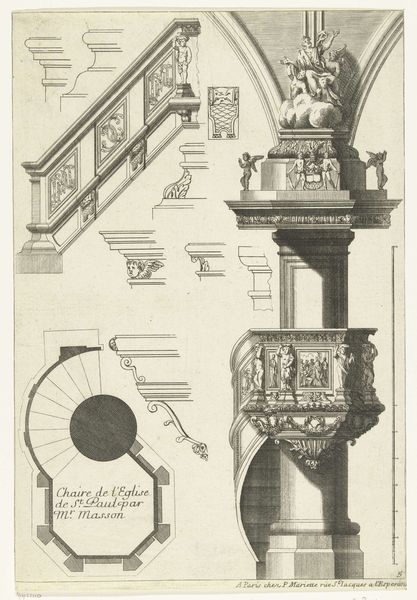
drawing, print, engraving, architecture
#
drawing
#
baroque
# print
#
form
#
11_renaissance
#
geometric
#
line
#
engraving
#
architecture
Dimensions: height 278 mm, width 179 mm
Copyright: Rijks Museum: Open Domain
This detailed drawing of the Doric order is an anonymous work. Notice the methodical rendering of architectural elements, typical of a technical study. The composition is structured around precise lines and geometric forms, emphasizing order and clarity. We see cross-sections of columns and entablatures, each component meticulously detailed. The careful cross-hatching creates a play of light and shadow, which adds depth to the otherwise flat surface. The drawing functions as a visual treatise, embodying the Renaissance fascination with classical architecture. We see a system of signs. The grid-like background alludes to a broader artistic and philosophical concern with rational order and the mathematical underpinnings of beauty. It invites us to contemplate the principles of harmony and proportion that shaped Renaissance aesthetics. Consider the drawing’s structural elements. The use of line and form is not merely descriptive but also analytical, inviting us to deconstruct and understand the underlying principles of architectural design. The artwork serves as a site for ongoing interpretation, reflecting how artistic and intellectual traditions are continuously re-evaluated through visual representation.
Comments
No comments
Be the first to comment and join the conversation on the ultimate creative platform.
